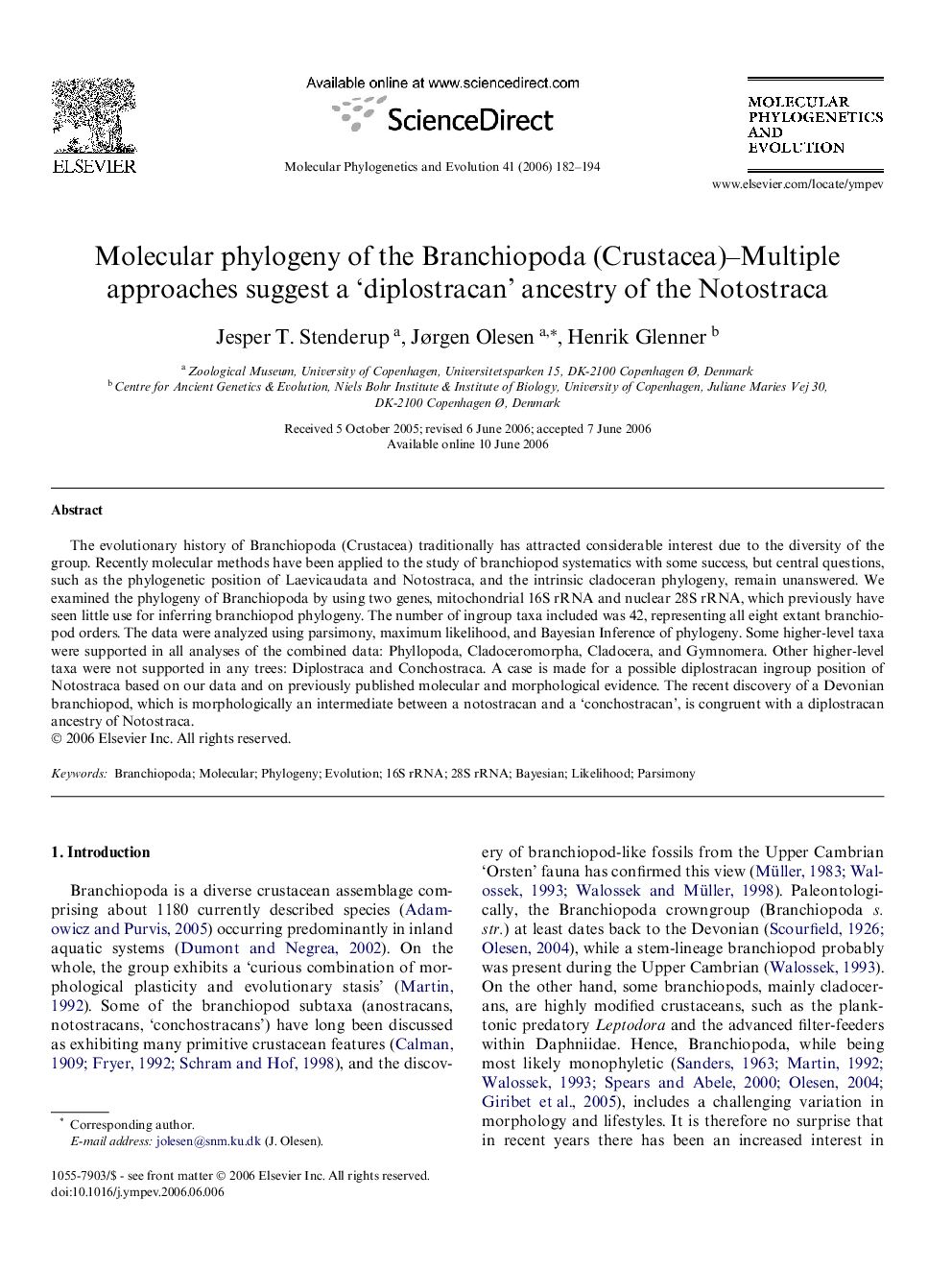| Article ID | Journal | Published Year | Pages | File Type |
|---|---|---|---|---|
| 2835588 | Molecular Phylogenetics and Evolution | 2006 | 13 Pages |
The evolutionary history of Branchiopoda (Crustacea) traditionally has attracted considerable interest due to the diversity of the group. Recently molecular methods have been applied to the study of branchiopod systematics with some success, but central questions, such as the phylogenetic position of Laevicaudata and Notostraca, and the intrinsic cladoceran phylogeny, remain unanswered. We examined the phylogeny of Branchiopoda by using two genes, mitochondrial 16S rRNA and nuclear 28S rRNA, which previously have seen little use for inferring branchiopod phylogeny. The number of ingroup taxa included was 42, representing all eight extant branchiopod orders. The data were analyzed using parsimony, maximum likelihood, and Bayesian Inference of phylogeny. Some higher-level taxa were supported in all analyses of the combined data: Phyllopoda, Cladoceromorpha, Cladocera, and Gymnomera. Other higher-level taxa were not supported in any trees: Diplostraca and Conchostraca. A case is made for a possible diplostracan ingroup position of Notostraca based on our data and on previously published molecular and morphological evidence. The recent discovery of a Devonian branchiopod, which is morphologically an intermediate between a notostracan and a ‘conchostracan’, is congruent with a diplostracan ancestry of Notostraca.
